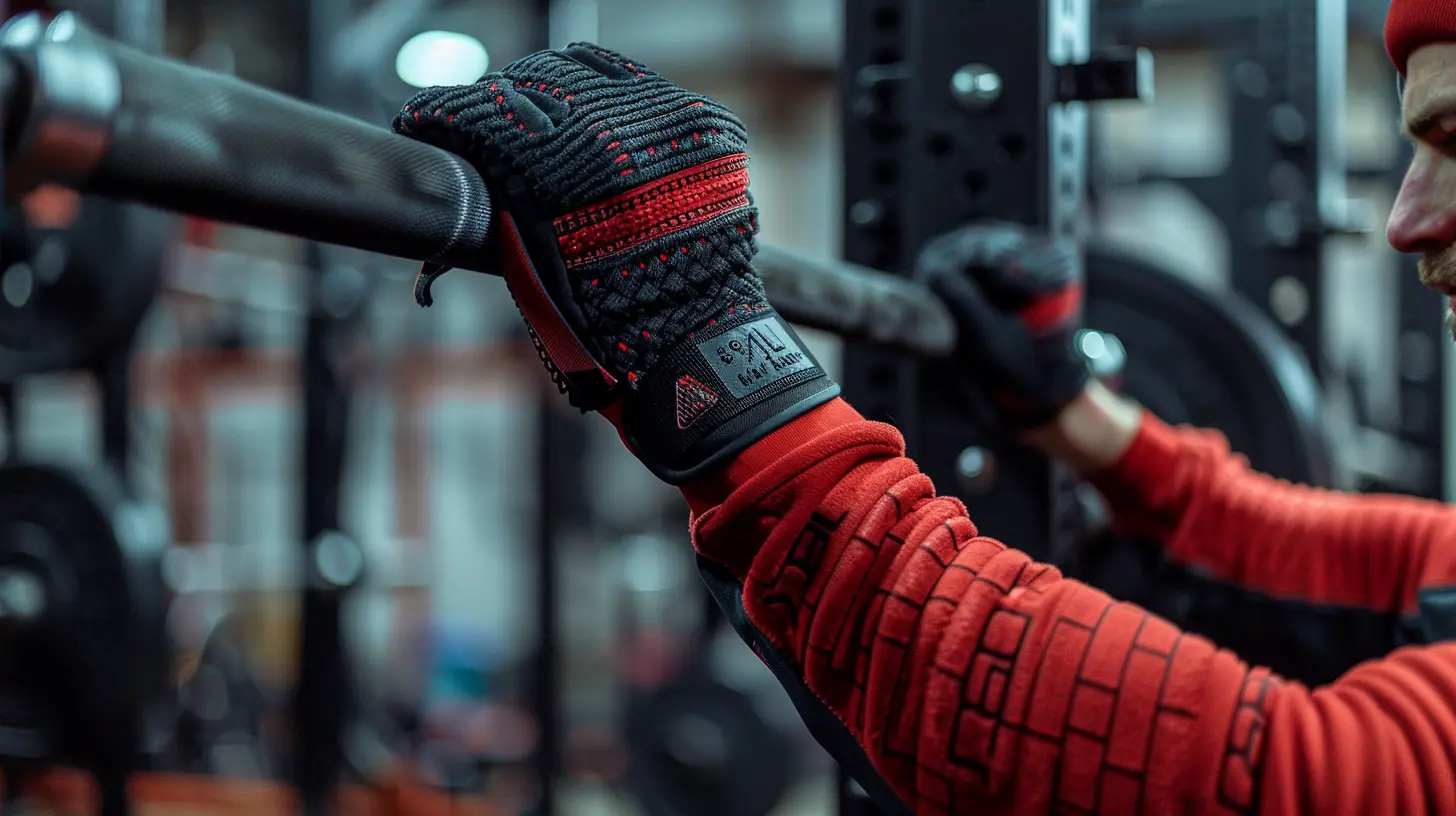
Newsletter Subscribe
Enter your email address below and subscribe to our newsletter

Enter your email address below and subscribe to our newsletter

The step-by-step guide “How to Break in Your New Weightlifting Gloves for Improved Grip” is essential for weightlifters seeking better grip support. We delve into the process of breaking in new gloves to enhance performance during weightlifting exercises. Shockingly, did you know that weightlifting gloves can reduce the risk of calluses and blisters by up to 50%? This guide will help you optimize your grip and elevate your weightlifting game.
Remember, checking for defects and ensuring a proper fit are crucial to the effectiveness and safety of your gloves.
Conclusion:
Breaking in your new weightlifting gloves is crucial for maximizing grip support. By carefully following the steps outlined in this blog post, you can ensure that your gloves fit well and offer the necessary grip to enhance your weightlifting performance.
Some alternatives to weightlifting gloves for improving grip support include using weightlifting chalk, liquid chalk, lifting straps, resistance bands, or grip pads. Each of these options can help enhance grip strength and support during weightlifting exercises.
Weightlifting gloves do not have a direct impact on hand strength development. Hand strength is primarily developed through resistance training exercises that target the muscles in the hands, wrists, and forearms. While weightlifting gloves can provide support and protection during weightlifting activities, they do not contribute to the actual development of hand strength.
Yes, there are different types of weightlifting gloves designed for specific exercises or lifts. Some weightlifting gloves are designed with extra padding and support for exercises like heavy deadlifts or rows, while others are designed with a more minimalist approach for exercises where grip strength is crucial, such as pull-ups or barbell curls. Additionally, there are weightlifting gloves made with wrist support for exercises like bench press or overhead press to help prevent wrist strain or injury.
Weightlifting gloves can help prevent calluses and blisters on the hands by providing a layer of protection between the skin and the weights or equipment. The gloves can help reduce friction and pressure on the hands during weightlifting, thus minimizing the development of calluses and blisters. However, it is important to ensure that the gloves fit properly and are made of high-quality material to effectively prevent skin irritation.
When looking for weightlifting gloves with good grip support, you should consider the following features:
By considering these features, you can ensure that the weightlifting gloves you choose provide good grip support during your workouts.
Weightlifting gloves help improve grip support by providing a layer of padding between your hands and the weightlifting equipment. This padding can reduce friction and prevent blisters or calluses from forming on your hands. Additionally, the gloves often have textured surfaces or rubberized grips that can enhance traction and grip strength, making it easier to hold onto the weights during various exercises.
Yes, there are specific cleaning and maintenance tips for weightlifting gloves to help keep them in good condition. It is recommended to hand wash the gloves regularly with mild soap and water to remove sweat, oils, and dirt. Avoid machine washing or drying the gloves as this can damage the material. Make sure to let them air dry completely before using them again. Additionally, storing the gloves in a well-ventilated area and away from direct sunlight can help prolong their lifespan.
Weightlifting gloves typically come in different sizes to ensure a better fit and comfort for the user. Standard sizes such as small, medium, and large are common options offered by most brands. This allows individuals to find the best size that suits their hand measurements and preferences.
One potential drawback of using weightlifting gloves for grip support is that they may reduce the natural development of calluses on the hands, which can provide additional protection and grip strength over time. Additionally, some weightlifters may find that gloves reduce the tactile feedback they receive when gripping the weights, which could affect their performance or form during exercises. Lastly, gloves may need to be cleaned regularly to prevent bacteria buildup due to sweat and moisture retention.
Weightlifting gloves should typically be replaced every 6 to 12 months, depending on the frequency of use and wear and tear. Signs that it’s time to replace weightlifting gloves include visible wear, loss of padding, tears, or a decrease in grip effectiveness.
Weightlifting gloves can provide additional grip and padding, which may help reduce the risk of hand injuries such as calluses and blisters. However, they may not completely prevent hand injuries during weightlifting as proper technique, form, and gradually increasing weights are also important factors in injury prevention.
Weightlifting gloves are not necessary for all types of weightlifting exercises. Some weightlifters prefer using gloves to provide extra grip, reduce calluses, or prevent blisters. However, many weightlifters choose not to use gloves as they prefer the feel of the barbell in their hands and believe it helps with grip strength. Ultimately, whether or not to use weightlifting gloves is a personal preference and not a requirement for all weightlifting exercises.
Weightlifting gloves can provide benefits such as better grip, protection for the hands, and reduced friction during weightlifting exercises. However, whether they directly affect the overall performance of a weightlifting workout is subjective and varies from person to person. Some individuals may find that weightlifting gloves enhance their performance by improving grip strength and reducing the risk of calluses or blisters. Others may prefer not to use gloves and feel more comfortable lifting weights without them. Ultimately, the impact of weightlifting gloves on performance depends on personal preference and comfort.
Comments are closed.
I never knew breaking in gloves could improve grip. Thanks for the informative article!
Great tips on breaking in weightlifting gloves! Can’t wait to try them out.
I appreciate the detailed explanation on how to properly break in weightlifting gloves. Very helpful.